My favourite -modern- Fable - If You Know What I mean...
Does the modern fable exist?
Will we recognize it or
will a fable always be associated with
a distant past in which
modern people have long lost interest?
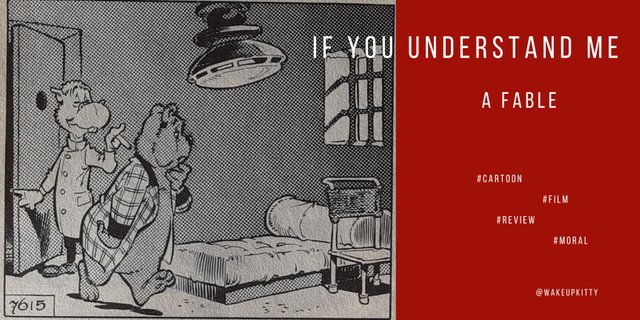
If history is taught at school, it is a fraction of what generations before had to learn. Reading turns out to be hard for the average person, despite decades if not centuries, of education. Reading is something in which today's youth have little interest. But... writers still exist, their words are still printed, although not always on paper. The internet is rich in stories and fables, modern stories in which animals - sometimes plants or items - live and think like people.
The fable is a way to illustrate certain human qualities, including the less attractive ones, and thus the story has a moral, a lesson to be learned. The question remains whether those who read/hear the story actually learn something. After all, the reader or listener can give free rein to their thoughts and feel more for the character referred to as 'the bad guy'.
In our current time, this is certainly not unthinkable, as more and more people have had enough of the stereotypical, outdated way of thinking. A fable from centuries ago must always be read in the spirit of the time it was written, and culture influences the way of writing and understanding as well which is not easy for us living today.
The moral of the story has been changed in many fables with the aim of 'educating' humanity.
Anthropomorphism: adding human behaviour, emotions, feelings and/or intentions to non-human entities (animals, plants, items - see A Bag Full Of Anger
Is there a difference between a fable and an anthropomorphic story?
It is when people are assigned animal or non-human traits (for example: the boy is as scared as a mouse, he shakes like a straw and behaves like a beaten dog but his uncle is as steady as a rock.
To me, the saga of "Oliver B. Bommel* a gentleman born in nobility is more than an anthropomorphic story. It is a modern fable with which the Dutch cartoonist Marten Toonder has educated people for decades.
A fable has a moral even if it is not stated. Perhaps the titles of the 'Bommelsaga' say enough.
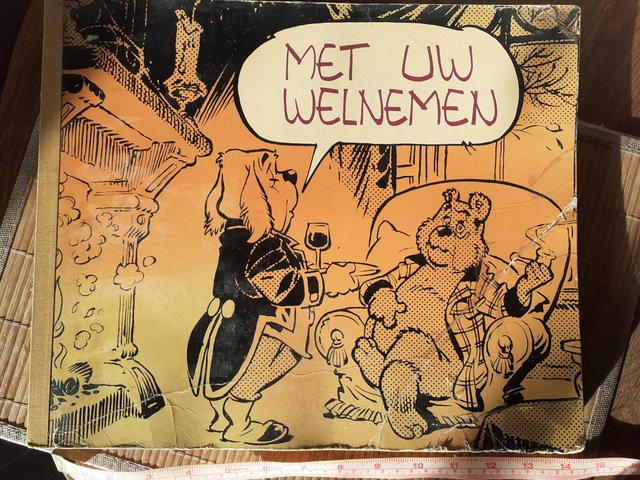 A huge, heavy book to show the cartoons in their original size
A huge, heavy book to show the cartoons in their original sizeSir Olivier B. Bommel is a bear
a gentleman of rank. He is single and lives in Castle 'Bommelstein' (Bumble stone) in Rommeldam (rommel = thunder/trash/what lies around and isn't cleaned up. The artist-cartoonist writer - was born in Rotterdam) he lives frugally but is generous when it comes to others.
Sir Olli has one servant Joost (a loyal, smart and alert dog living with him) and lives a simple and quiet life. He likes peace and order, the unexpected makes him nervous and upset, causing him to stutter.
His go-to line is: If you know what I mean.
We can therefore conclude that Sir Olli is often not understood despite his good intentions or knows he is different.
The gentleman of rank is fooled and exploited by many, a great example is the grocer who makes him pay many times more stating "Sir Olli can afford it" while selling him rotten eggs!
Tom Poes (Tom Cat) is the friend of this gentleman, the wise guy in the story, he always knows better, sees the dark side and even Sir Olli can't help feeling irritated once in a while. Tom Poes sees the bears on the road Bommel prefers to ignore them to keep his peace. Even though this nobleman, who just wants to live his scheduled life, keeps getting into trouble through no fault of his own, he always finds a way out. The memories of the words of his good father support him.
Sir Olli is certainly not a boring bear and, when push comes to shove, he is more loyal than his servant Joost the dog.
The Zwelbast is the modern fable depicted. The film "Als je begrijpt wat ik bedoel (If you understand what I mean to say) I still enjoy and will often be broadcast around December/winter.
When dark clouds show and the weather changes, the Zwelbast is on its way!
Joost the servant reads it that night in a book and warns Sir Olli he better cancel the planned party.
Lord Bommel waves away the concerns with the remark: why are you reading a scary book, if I already read?
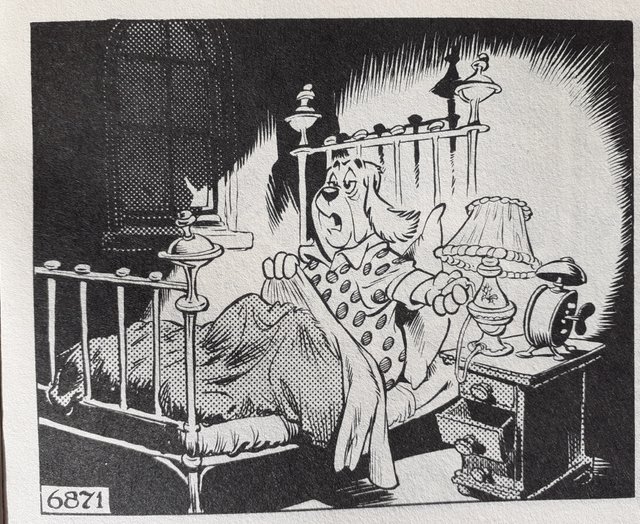 Joost the servant always alert
Joost the servant always alertIndeed that night the Zwelbast pays a visit, she walks by and leaves her huge footprints and an egg behind. An egg Sir Olli considers a great gift for his beautiful neighbour until it hatches and he is adopted as a father.
The bond between father and son is the storyline.
While everyone, except for the grocer, treats Lord Bommel like a pariah because of the trouble his son brings upon the villagers, the Lord of the Nobility stands his ground. He stands up for his son protects him, is being hunted, lives with the boy in the wilderness and ends up in prison. The bond between those two is more than obvious and hard to deny.
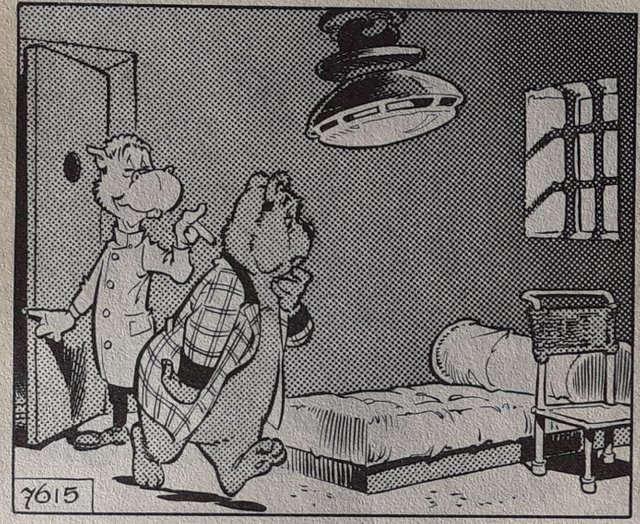 Sir Bommel is not the only one visiting a shrink. His son is forced by the mayor to see the doctor who claims to 'cure' the boy's behaviour
Sir Bommel is not the only one visiting a shrink. His son is forced by the mayor to see the doctor who claims to 'cure' the boy's behaviourThe love of this parent for his child
is greater than staying with his wealthy friends and his lifestyle as a nobility. The way Joost and Sir Olli are manipulated by the major is clear.
When Zwellie (Swell, a dragon that swells up and grows when he is afraid or has fun) is finally captured, sold to criminals, locked in a cage and forced to perform in the circus, Sir Olli can no longer bear the suffering of his beloved child.
He frees his son and tells him to flee, go over the hills, to find his real family dragons like him. The father lets his son go, realizing that the world he lives in is not the right environment for his son.
In the distance, the call of a Zwelbast sounds and is recognized by the hunted boy which makes it easier to leave.
Lord Bommel is restored to his honour because, as Tom Poes twists the story, it was Bommel who saved Rommeldam and fought the monster.
The moral of the story?
- Even the faint of heart are brave and fight when it comes to love;
- Hypocrites will always be hypocrites;
- True friendship does not exist if people take advantage of you;
- Crime pays;
- A parent's love for a child surpasses everything even if that child is not related by blood.
For me, the moral of the story of the 'Zwelbast' is the last one. Parents who consciously choose a child, one with completely different genes than themselves, are the most loving, understanding and loyal parents a child could wish for. They accept you as you are, not because you are the carrier of their genes.
NOTE: zwelbast - zwel + bast means swells + body
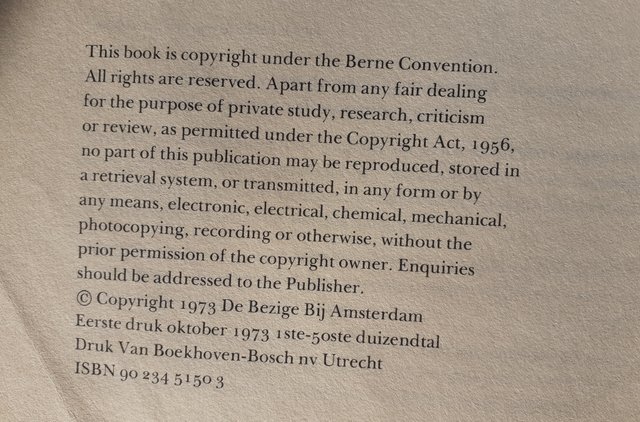
Header: Canva
Video: 'Als je begrijpt wat ik bedoel' - YouTube
Pictures: book 'Met Uw Welnemen' by Marten Toonder
12-3-2024
I am a mobile phone user only
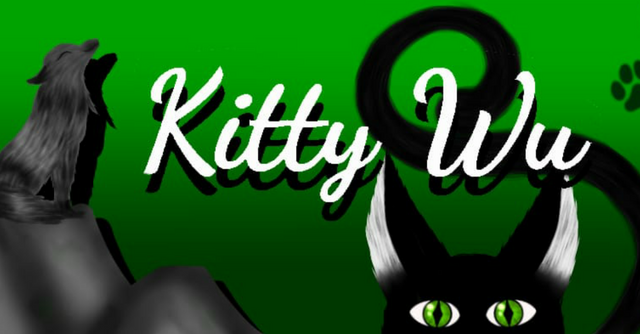
@steem.ofanimal 'My favourite Fable' entry
@aminasafdar @yaladeeds @fadthalibt @yaaaa @deprincedeman @germanbava @patjewell @sbamsoneu @ibesso @gentlesun @mhizta @patudoh @lunasilver
25% @dream.socialclub
25% @null
#steemexclusive #favoritefable-s4 #review #club75 #holland #kittywu #film #fable #burnsteem25
https://x.com/wakeup_kitty/status/1767570344443818444?s=20
This term “ Anthropomorphism” is also similar to the word “personification”. Although, we were thought about it in poetry.
We both learned something. If you like share an example.
Thanks for stopping by ❤️🍀